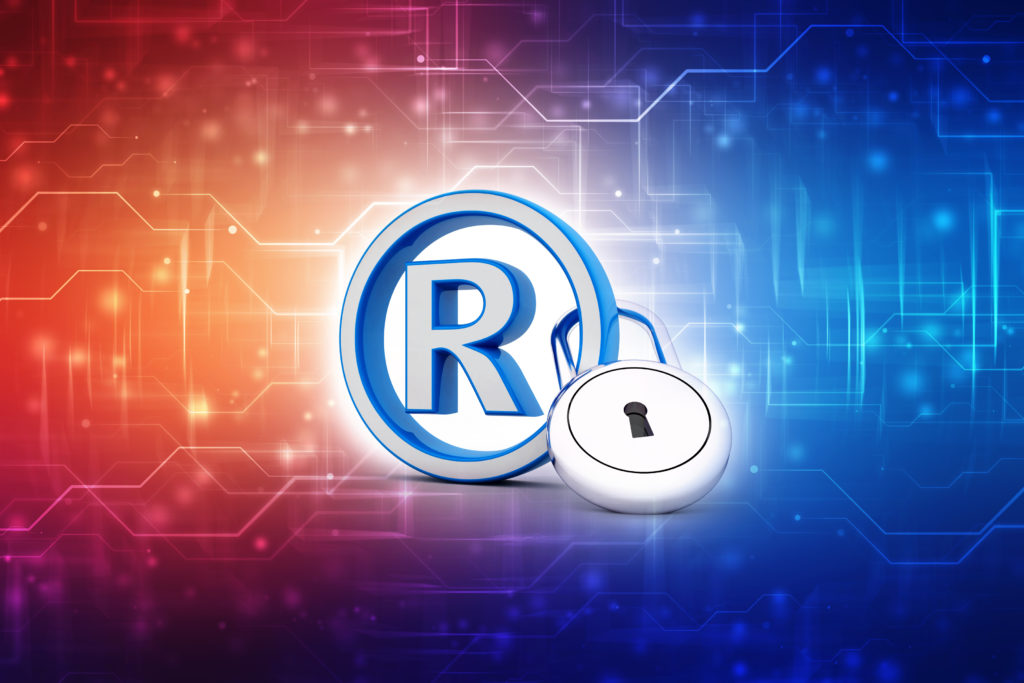“As the USPTO and brand owners continue to face challenges around the integrity of the trademark register, recent data show that the Office’s trademark examining attorneys can leverage commercially-available AI tools to achieve important strategic goals and fight bad faith registrations today.”
 Summer has been historically associated with celebrating the enactment of the Trademark Act of 1946 (the “Lanham Act”). Accordingly, Congress now annually introduces resolutions celebrating July, along with Independence, as “anti-counterfeiting awareness month.” These non-binding resolutions are an important reminder of the national importance of trademarks—and a reminder that counterfeiting, and related bad faith trademark misconduct, negatively impacts U.S. small businesses, American jobs, the U.S. economy, and erodes our international competitiveness.
Summer has been historically associated with celebrating the enactment of the Trademark Act of 1946 (the “Lanham Act”). Accordingly, Congress now annually introduces resolutions celebrating July, along with Independence, as “anti-counterfeiting awareness month.” These non-binding resolutions are an important reminder of the national importance of trademarks—and a reminder that counterfeiting, and related bad faith trademark misconduct, negatively impacts U.S. small businesses, American jobs, the U.S. economy, and erodes our international competitiveness.
Increasingly, brand owners are fighting numerous trademark issues around bad faith registrations and more artful counterfeiting every day of every month. Fortunately, one important element of the solution for restoring the integrity of the register are the tools made possible by responsible artificial intelligence and machine learning (AI/ML) image recognition technology that can fight the fakes.
USPTO Bipartisan Leadership Fighting the Fakes
The U.S. Patent and Trademark Office (USPTO) leadership, first under Director Iancu and now under Director Vidal, should be commended for its leadership in addressing these issues. In 2019, the then-Commissioner for Trademarks testified before the U.S. House Judiciary IP Subcommittee:
Unfortunately, in recent years, the USPTO has seen a significant increase in the number of applicants who are not fulfilling their legal and ethical obligations to file accurately and in good faith, particularly with respect to claims that the mark is in use in commerce. The USPTO increasingly has been receiving trademark application and registration maintenance filings involving false or inaccurate use claims and submission of fake or digitally altered specimens that do not actually show use of the mark in U.S. commerce in the ordinary course of trade as required by law.
The Role of AI and ML in Fighting Fakes
Earlier this year, Commissioner for Trademarks, the Hon. David Gooder, shared an important insight: “A small improvement actually generates a really measurable change.” The USPTO has developed and is executing a robust action plan to fight such bad faith trademark registrations, as part of its strategic planning goals. The plan includes hiring more trademark examining attorneys, enhanced education, additional training, and the use of sophisticated AI/ML tools for use by the examination corps. The USPTO’s IT-side of the house is embracing AI/ML and other robotic tools to empower examiners to fight fakes, increase productivity, and enhance examination quality. The improvements guaranteed by AI/ML and other robotic tools can truly generate very measurable changes.
At the heart of the world’s IP offices’ embrace of AI/ML tools is a recognition that the most cost-effective response to addressing productivity and quality, along with misconduct and bad faith registrations, is the use of technology hand-in-hand with highly trained examiners. In light of the record backlog and pendency, the AI/ML tools are vital to drive the productivity gains afforded by speed and efficiency and find the potential conflicts among application drawings. Advancements in AI/ML have improved image recognition technology, which can further supplement the need for design search codes in trademark clearance. Image recognition technology provides you with the ability to use an image as the input for a search query. This simple operation eliminates the challenges involved with trying to describe an image in words and deciding which design search codes to use, which makes trademark research much more efficient.
The USPTO is in the good company of other world IP offices which are providing AI tools to examiners to leverage the quality of the review process in both the patent and trademark processes. Some of the recent developments by other major world IP offices in using AI/ML for trademarks include:
IP Australia. Has adopted a number of AI tools, including TrademarkVision Image Recognition software and “Trade Mark Assist” for trademark examination.
Canadian Intellectual Property Office (CIPO). CIPO began testing this AI initiative as a pilot project in Spring 2022. The full rollout is expected to take place later this year.
Norway IPO. Has implemented the AI software Acsepto with the goal of improving application examination quality, as well as, increasing application preparation and examination efficiency.
EUIPO. The EUIPO’s Strategic Plan 2025 explains that it “aims to provide customer-centric services and contribute to a stronger IP system, efficient enforcement, and better understanding of IP rights in a global and increasingly digital environment by building and promoting sustainable networks, thereby supporting competitiveness, innovation, and creativity in the EU.” Accordingly, the agency has implemented “Computer Vision” for the analysis of images, image recognition, image comparison, and text recognition. The agency uses a third-party solution made available to the public through the eSearch Plus tool.
China Trademark Office (CNIPA). In 2019, it was reported that office registry launched a Smart Trademark Search function; further, it is reported that the registry is seeing improved search efficiency and greater consistency in examination results.
Singapore IPO. It is launching several AI initiatives, including its “Distinctiveness Checker,” using machine learning tools to automatically measure the distinctiveness of a word mark and to provide evidence of support.
How Does AI Work to Fight Bad Faith Registrations?
As the USPTO and brand owners continue to face challenges around the integrity of the Principal Register, our data insights show that the Office’s trademark examining attorneys can leverage commercially-available AI tools to achieve important strategic goals and fight bad faith registrations today.
One significant issue in this challenge is the dramatic increase in visual marks over recent years. Our data has confirmed that more than 30% of all USPTO trademark applications include an image. This translates into the filing of more than 280,000 trademark applications with an image in 2021. Our data further indicated a decline in registration success rates, with a steeper decline for applications with an image. In many ways, the examination system is a 20th century model struggling in a 21st century world of digital shenanigans. The current U.S. system relies heavily on the coding and classification system. Artful infringers can effectively game the system by altering a design in ways that have very similar looking logos coded differently. For example, consider this LVM case:
 Despite the differences in the number of points on the stars, the applicant’s trademark looks very similar to the registered trademark owned by Louis Vuitton, which may result in a Section 2(d) refusal issued by the examining attorney, or an opposition filed by the registrant on the grounds of likelihood of confusion.
Despite the differences in the number of points on the stars, the applicant’s trademark looks very similar to the registered trademark owned by Louis Vuitton, which may result in a Section 2(d) refusal issued by the examining attorney, or an opposition filed by the registrant on the grounds of likelihood of confusion.
Similarly, a traditional image search may simply be ineffective in identifying an artful infringer. The following is an example of a troubling, “catastrophic” logo (sorry cat fanciers) which avoids traditional image search techniques. While a human can easily conclude that the “cat” logo clearly infringes the Adidas® logo, traditional reverse-search techniques cannot smartly match the logo elements (i.e., the triple leaf pattern and stripes). Brand owners can effectively use AI/ML image recognition to easily and swiftly police such counterfeiting.
AI/ML is Ready to Help Now
 The ongoing, real world trademark challenges toward maintaining the integrity of the register, the USPTO’s strategic goals, and fighting counterfeits in the wild, are real and complex. The USPTO and other major IP offices continue to provide meaningful leadership in fighting these problems, including through offering innovative technological solutions in the hands of its examination corps. The use of responsible AI/ML search technology is now beyond a proof of concept, as evidenced by its swift adoption by IP offices around the world. Importantly, the use of AI/ML as a trademark image search tool can reliably be done in an ethical way that can maintain privacy, help leverage the highly trained human workforce—not replace people. Fortunately, a number of these AI/ML image recognition systems are commercially available off-the-shelf today. IP offices do not require the time, expense, or labor of a bespoke project that entails reinventing the proverbial cybernetic wheel. Brand owners are clamoring for some justice, and now it’s available.
The ongoing, real world trademark challenges toward maintaining the integrity of the register, the USPTO’s strategic goals, and fighting counterfeits in the wild, are real and complex. The USPTO and other major IP offices continue to provide meaningful leadership in fighting these problems, including through offering innovative technological solutions in the hands of its examination corps. The use of responsible AI/ML search technology is now beyond a proof of concept, as evidenced by its swift adoption by IP offices around the world. Importantly, the use of AI/ML as a trademark image search tool can reliably be done in an ethical way that can maintain privacy, help leverage the highly trained human workforce—not replace people. Fortunately, a number of these AI/ML image recognition systems are commercially available off-the-shelf today. IP offices do not require the time, expense, or labor of a bespoke project that entails reinventing the proverbial cybernetic wheel. Brand owners are clamoring for some justice, and now it’s available.
Image Source: Deposit Photos
Image ID:449846934
Copyright:Blackboard373

![[IPWatchdog Logo]](https://ipwatchdog.com/wp-content/themes/IPWatchdog%20-%202023/assets/images/temp/logo-small@2x.png)

![[Advertisement]](https://ipwatchdog.com/wp-content/uploads/2024/04/UnitedLex-May-2-2024-sidebar-700x500-1.jpg)
![[Advertisement]](https://ipwatchdog.com/wp-content/uploads/2024/04/Artificial-Intelligence-2024-REPLAY-sidebar-700x500-corrected.jpg)
![[Advertisement]](https://ipwatchdog.com/wp-content/uploads/2024/04/Patent-Litigation-Masters-2024-sidebar-700x500-1.jpg)

![[Advertisement]](https://ipwatchdog.com/wp-content/uploads/2021/12/WEBINAR-336-x-280-px.png)
![[Advertisement]](https://ipwatchdog.com/wp-content/uploads/2021/12/2021-Patent-Practice-on-Demand-recorded-Feb-2021-336-x-280.jpg)
![[Advertisement]](https://ipwatchdog.com/wp-content/uploads/2021/12/Ad-4-The-Invent-Patent-System™.png)






Join the Discussion
One comment so far.
Loozap
August 6, 2022 08:18 pmGrand merci pour tout